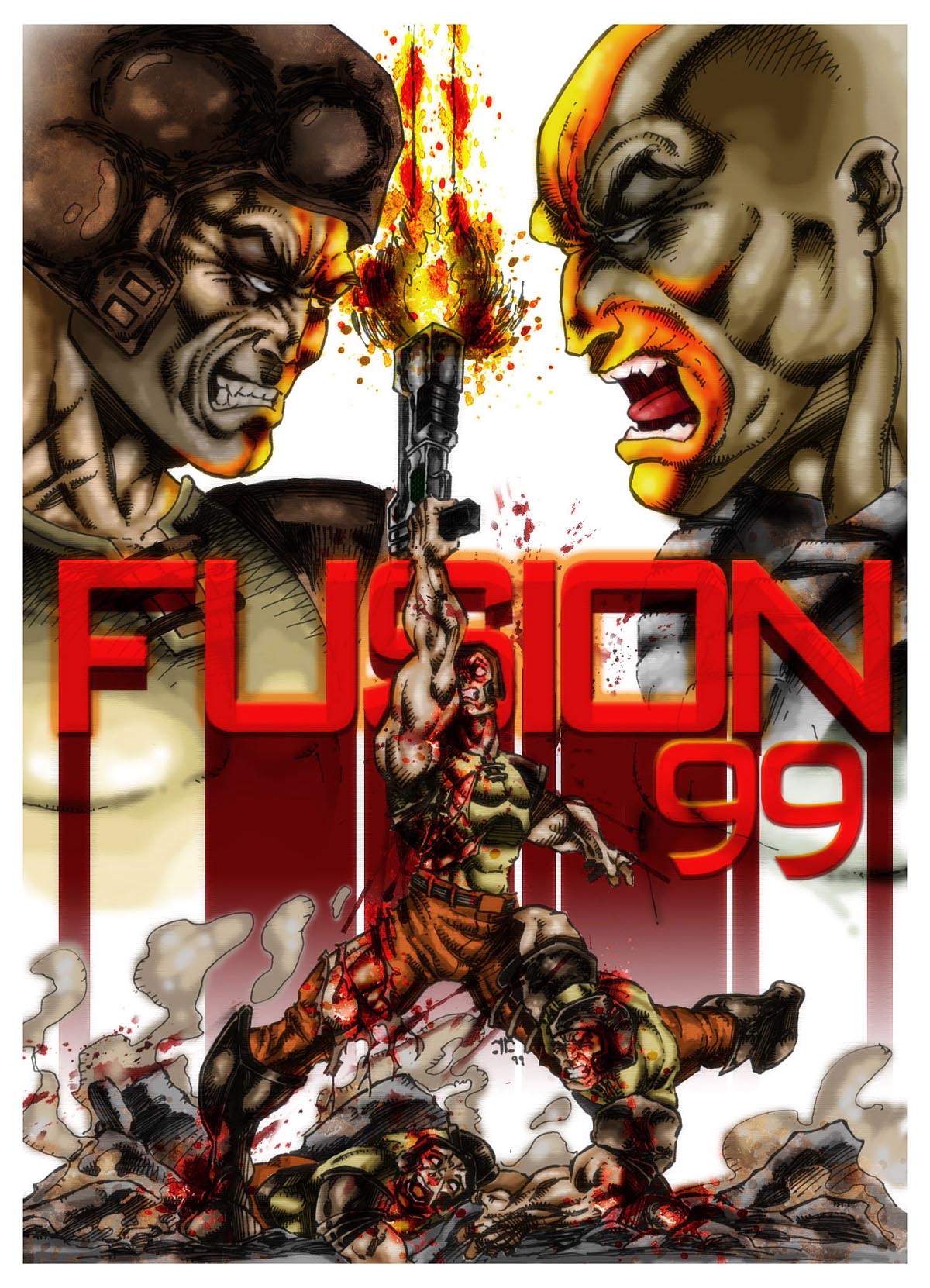| Stage 6 - The Logo
Correct
I
select the logo layer and used its mask to cut away all the
colours and overlays underneath its area.
I mask
select the dark red streaj and apply a gradient fade out to
it and make the light red an OVERLAY layer and apply layer effect
BEVEL AND EMBOSS , INNER GLOW and OUTERGLOW.
Likewise
I do BEVEL AN EMBOSS layer effect on the '99'
and thats
my baby complete and ready to roll after a couple extra touches
and tweaks with HUE and SATURATION and a faded Underpainting
filter (the only filter used in whole process) over the flattened
version below.
It gives
things a nice textured quality ina subtle way so as not to overpower
or destroy the work i did in ink and in colour.
I use
a mouse,pencils,pens,scanner,camera for my work.
One day
I will get a graphics tablet so I can speed up.
This
piece took about 12-15 hours unfortunatly..
To Sum
up. I think Prepartion and knowledge of the quick way to do
things is vital to producing such images. Imagination is helpfull
but a boffin can fake imagination <G>
|
